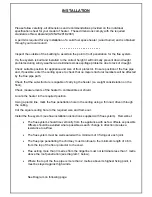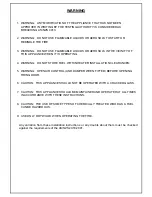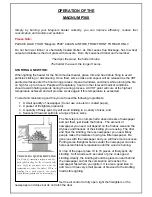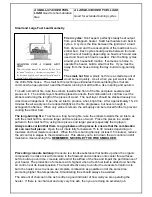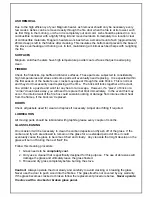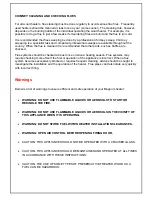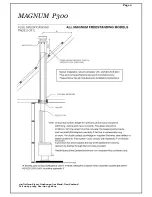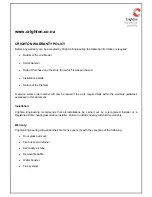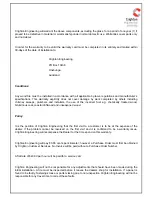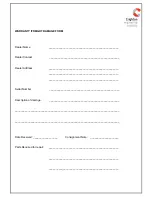
Improper heater firing technique:
When a solid fuel heater is starved for air it smoulders,
producing a relatively cool, smoky fire. The temperatures throughout the system are low. During a
smouldering fire, the flue system will not be receiving the hot gas it needs to produce strong draft.
When the heater door is opened, smoke will spill into the room. A smouldering fire is the single
most common reason for smoke spillage and totally unnecessary. By using the suggestions on
proper firing technique earlier in this document, you will be able to avoid these smouldering fires.
PURCHASING THE FIREWOOD
The quality of the firewood you burn can have a dramatic effect on the efficiency and operation of
the heater. The main factors that affect the burning characteristics of firewood are moisture
content, tree species and piece size. The moisture content of the wood affects the rate at which it
burns and the efficiency of combustion. When trees are cut, the wood moisture content ranges
between 35 and 60 percent by weight*. If you attempt to burn wood this wet it will be hard to
ignite, slow to burn and will hiss and sizzle in the firebox. So much energy will be consumed in
boiling off the excess water that the efficiency of combustion and the heat to your home will be
greatly reduced,
condensation and corrosion may be occurring in the flue and smoke may be
causing problems to your neighbours. Properly seasoned wood ignites readily and burns
efficiently.
Firewood should be cut and split in the early spring and stacked under cover, with good
ventilation, to be ready for burning when required.
Look for checks or cracks in the end grain as a sign of dry wood. The stacks of firewood should be
in an open area so that air can circulate through them. During the summer, as warm breezes flow
through the stacks, carrying away the evaporating water, the moisture content of the wood will fall
to around 20 per cent. At this moisture content, the wood is ready for burning.
Although the energy content of dry wood per kilogram is almost the same regardless of species,
softwoods and hardwoods burn differently because of differences in density. Softwoods, such as
pine, are less dense than hardwoods like gums, Manuka or Black Wattle. A denser wood will
produce a longer-lasting coal bed, while a less dense wood will bring a fire to an optimum burning
temperature more quickly.
The size of the firewood pieces affects the rate of combustion. Larger pieces ignite and release
their energy more slowly than small pieces. Smaller pieces are better for short, hot fires and larger
pieces are preferable for extended firing cycles. In general, commercial firewood dealers supply
firewood in thicker pieces than modern wood-burning heaters can handle. It is often necessary to
split some of the wood again before using it. The thickest piece size for high-efficiency heaters
should not exceed about 150 mm (6 in.) across the largest dimension and a range of smaller
pieces will be needed for effective stoking. Maximum log length varies according to model.
BURNING COAL
Due to their construction, the burning of coal in Magnum solid fuel heaters is prohibited.
Magnum Solid Fuel Heater Maintenance
To keep your heater burning clean and efficient it is important that you carry out regular
maintenance. General maintenance checks should include the following:-



